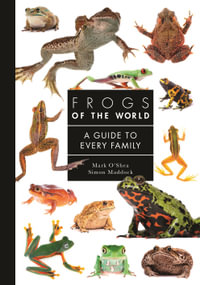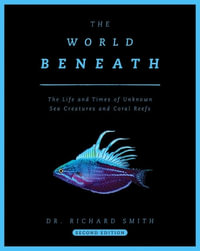"It's getting better! This is not surprising considering the highly skilled team of editors and authors; the third volume of Biology of Sea Turtles should be on the shelf of every sea turtle biologist. The book is presented in 16 chapters, covering many aspects, from morphology to physiology and genetics, to organic pollutants and fisheries by catch mitigation. Previous volumes have inspired many sea turtle scientists and conservation practitioners, myself included.
...important new findings are included in this latest volume, several based on methodologies only used intensively on sea turtle ecology in recent times... Looking at the three-volume series of Biology of Sea Turtles, clear developments in the field can be seen, with a range of paradigms being revisited and revised in the last volume, for instance ontogeny and individual specialization. ...
All three volumes, and the third in particular, end with recommendations for further research, the need for methodology improvements, and key questions to be addressed. This is a valuable approach, and it makes the current volume a valuable guide, as well as an inspiration, for the current and next generation of sea turtle scientists.
Overall, in my opinion the current book should be compulsory reading for researchers, managers, and conservationists who deal with marine turtles and their habitats. I cannot wait until vol. IV is available!"
-Leandro Bugoni, Universidade Federal do Rio Grande - FURG in Marine Biology Research, Volume 10, Issue 1, 2014
Praise for Previous Volumes:
" ... simply cannot be missing from the bookshelf of anyone seriously involved with sea turtles, whether it be sea turtle researchers or the staff and managers of marine protected areas with sea turtles in their waters or on their beaches."
-Michael Stachowitsch, in Marine Ecology
"The Biology of Sea Turtles is one of the best places to start ... may be recommended to libraries and individuals."
-N. Mrosovsky, in Nature
" ... likely to become the standard reference in the field ... well illustrated with line drawings and photographs ... a first source for many herpetologists looking for current information on sea turtles."
-Kentwood D. Wells, in Copeia
" ... undoubtedly a key reference text for those involved closely with sea turtle research and an essential purchase for institutional libraries ... ."
-Brendan J Godley, in Marine Turtle Newsletter
"It's getting better! This is not surprising considering the highly skilled team of editors and authors; the third volume of Biology of Sea Turtles should be on the shelf of every sea turtle biologist. The book is presented in 16 chapters, covering many aspects, from morphology to physiology and genetics, to organic pollutants and fisheries by catch mitigation. Previous volumes have inspired many sea turtle scientists and conservation practitioners, myself included.
...important new findings are included in this latest volume, several based on methodologies only used intensively on sea turtle ecology in recent times... Looking at the three-volume series of Biology of Sea Turtles, clear developments in the field can be seen, with a range of paradigms being revisited and revised in the last volume, for instance ontogeny and individual specialization. ...
All three volumes, and the third in particular, end with recommendations for further research, the need for methodology improvements, and key questions to be addressed. This is a valuable approach, and it makes the current volume a valuable guide, as well as an inspiration, for the current and next generation of sea turtle scientists.
Overall, in my opinion the current book should be compulsory reading for researchers, managers, and conservationists who deal with marine turtles and their habitats. I cannot wait until vol. IV is available!"
-Leandro Bugoni, Universidade Federal do Rio Grande - FURG, in Marine Biology Research, Volume 10, Issue 1, 2014
Praise for Previous Volumes:
" ... simply cannot be missing from the bookshelf of anyone seriously involved with sea turtles, whether it be sea turtle researchers or the staff and managers of marine protected areas with sea turtles in their waters or on their beaches."
-Michael Stachowitsch, in Marine Ecology
"The Biology of Sea Turtles is one of the best places to start ... may be recommended to libraries and individuals."
-N. Mrosovsky, in Nature
" ... likely to become the standard reference in the field ... well illustrated with line drawings and photographs ... a first source for many herpetologists looking for current information on sea turtles."
-Kentwood D. Wells, in Copeia
" ... undoubtedly a key reference text for those involved closely with sea turtle research and an essential purchase for institutional libraries ... ."
-Brendan J Godley, in Marine Turtle Newsletter
























